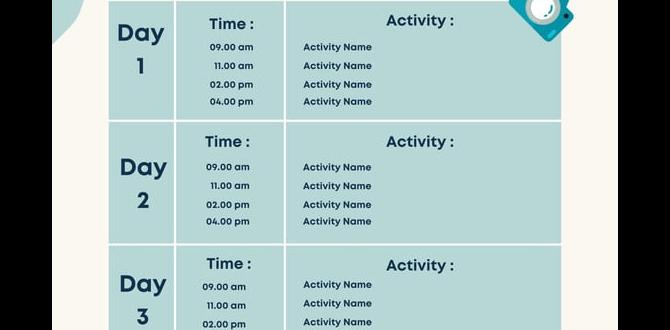Beirut Accessible Travel Guide: Essential Tips are crucial for ensuring a comfortable and enjoyable trip. This guide provides practical advice for navigating Beirut with accessibility needs, covering transportation, accommodation, attractions, and essential preparations for a stress-free journey.
Exploring Beirut, a city rich in history and vibrant culture, should be an experience for everyone. However, planning a trip with specific accessibility needs can sometimes feel overwhelming. Many travelers worry about navigating unfamiliar terrain, finding suitable accommodations, or accessing popular sites.
This guide is designed to demystify accessible travel in Beirut, offering clear, step-by-step tips to make your visit smooth and memorable. We’ll cover everything you need to know to feel confident and prepared, ensuring your adventure in this captivating Lebanese capital is as enjoyable as it is enriching.
Understanding Accessibility in Beirut
Beirut is a city in transition, and its accessibility landscape is evolving. While progress is being made, older infrastructure and varying standards mean travelers with mobility challenges, visual impairments, or other accessibility needs should be well-prepared. Understanding these nuances is the first step to a successful trip. Many historical areas may present challenges, but with the right planning, you can still discover the heart of Beirut.
Public Transportation: Navigating the City
Getting around Beirut can be an adventure. While public transport options exist, their accessibility can be inconsistent. Knowing your options and planning ahead can make a big difference.
Taxis and Ride-Sharing Services
Taxis are abundant in Beirut. While standard taxis may not be equipped for wheelchairs, some companies are beginning to offer accessible vehicles. It’s advisable to pre-book through a reputable company that specifically mentions accessible options. Ride-sharing apps are popular, but vehicle types vary, so confirming accessibility when booking is key. It’s often best to call the service directly or check the app’s features for accessible vehicle requests.
Metro Beirut (Under Development)
Beirut is developing a new metro system, which, once fully operational, is expected to significantly improve public transport accessibility. Current information suggests modern stations and trains will be designed with accessibility in mind, including elevators and tactile paving. Keep an eye on official updates for opening dates and accessibility features as they become available. You can find more on urban development projects in the region via sources like the World Bank Lebanon, which often funds infrastructure improvements.
Buses and Microbuses
The current bus system, including informal microbuses (service taxis), can be challenging for individuals with mobility issues. Buses may have high steps, and microbuses often have limited space. If you plan to use these, it’s recommended to have a travel companion assist you, or prioritize other transport methods.
Accessible Accommodation Options
Finding a comfortable and accessible place to stay is paramount. While dedicated accessible hotels are still emerging, many newer hotels and well-managed older ones are making efforts to accommodate guests with disabilities.
What to Look For in Accessible Hotels:
- Ramps and Lifts: Essential for navigating different levels of the hotel.
- Accessible Rooms: These should feature wider doorways, grab bars in bathrooms, roll-in showers or accessible bathtubs, and lower sink and counter heights.
- Elevator Access: If your room is not on the ground floor, ensure the hotel has a functioning elevator.
- Staff Assistance: Hotels with well-trained staff who can offer assistance are invaluable.
When booking, always contact the hotel directly to discuss your specific needs. Don’t rely solely on online descriptions. Ask detailed questions about bathroom dimensions, shower accessibility, and the height of beds.
Accessible Attractions and Activities
Beirut offers a wealth of cultural and historical sites. Here’s how you can best experience them:
Museums and Galleries
Many of Beirut’s museums are actively working to improve accessibility. The Sursock Museum, for instance, has made efforts to provide access to its spaces. It’s always best to check the individual museum’s website or call ahead to inquire about ramps, elevators, accessible restrooms, any sensory-friendly hours, or available assistive services like audio guides or braille materials. The National Museum of Beirut is another key site, and while much of it is on the ground floor, checking for current accessibility features is wise.
Historic Sites and Landmarks
Navigating Beirut’s historic districts, like the area around the Nejmeh Square or the ruins of the Roman Baths, can be uneven. Cobblestone streets and limited sidewalk space are common. Consider guided tours that cater to accessibility or focus on areas with more modern infrastructure. The Beirut Waterfront promenade is generally flat and offers good accessibility for a stroll with sea views.
Shopping and Dining
Many modern shopping malls and newer restaurants in areas like Downtown Beirut or Gemmayzeh are designed with accessibility in mind, featuring ramps, elevators, and accessible restrooms. Older establishments in historic areas might be more challenging. Many restaurants offer outdoor seating, which can sometimes be easier to access. When in doubt, call ahead to confirm.
Essential Preparations for Accessible Travel
Thorough preparation is key to a seamless accessible trip to Beirut. Here are some vital steps:
1. Travel Insurance with Comprehensive Coverage
Ensure your travel insurance covers any pre-existing conditions and includes medical emergency evacuation if necessary. Understanding the policy details regarding accessible equipment or specific medical needs is crucial.
2. Packing Smartly: Comfort and Essential Supplies
Beyond your personal clothing and toiletries, consider packing items that enhance comfort and manage specific needs. For travelers managing continence, packing an ample supply of adult diapers or protective underwear is essential.
Brands that offer discreet, highly absorbent, and comfortable options can make a significant difference, especially during long travel days or while exploring. Likewise, parents traveling with children should ensure they have an adequate supply of child diapers and related convenience items. Packing these from home guarantees you have reliable products that suit your needs. Consider brands offering:
- High Absorbency: For extended wear and peace of mind.
- Odor Control: To maintain discretion and comfort.
- Comfortable Fit: Breathable materials and snug designs prevent leaks and skin irritation.
- Discreet Packaging: For ease of transport and privacy.
Other helpful items include a portable wheelchair ramp (if you use one and anticipate uneven surfaces), any necessary medications in their original packaging with prescriptions, and a basic first-aid kit.
3. Communication and Local Support
Learn a few basic Arabic phrases – even simple greetings can be appreciated. Have a translation app on your phone. Research local organizations or disability advocacy groups in Beirut that might offer assistance or information. Having a local contact number for your hotel or a trusted driver can also be very helpful in case of any issues.
4. Pre-booking and Confirming
As mentioned, always pre-book any accessible transportation or tours. Confirm your hotel room’s accessibility features directly with the venue before you arrive. This proactive approach saves time and avoids disappointment on arrival.
Navigating Daily Challenges
Even with the best planning, some daily challenges might arise. Here’s how to approach them:
Sidewalks and Pavements
Beirut’s sidewalks can be narrow, uneven, or obstructed by parked cars and street furniture. Be patient. If you have a companion, they can help guide you. If traveling solo, consider using ride-sharing services or taxis for longer distances to bypass difficult sections.
Traffic and Pedestrian Crossings
Traffic can be hectic. Pedestrian crossings may not always have signals or may be ignored by drivers. Always exercise extreme caution when crossing streets. If possible, cross with a group or at intersections with traffic lights. Some newer, major intersections are better managed.
In-country Assistance
If you require ongoing assistance, such as personal care, consider researching reputable home care nursing agencies in Beirut that offer temporary services for travelers. This can provide an added layer of security and comfort.
Sample Accessible Travel Itinerary for Beirut
This sample itinerary focuses on accessible experiences, acknowledging that not all sites may be fully accessible and flexibility is key.
Day 1: Downtown Beirut & Waterfront
- Morning: Arrive and check into your accessible hotel.
- Afternoon: Explore Downtown Beirut (Solidere area). Many modern buildings and plazas are accessible. Visit the Beirut Souks, which are largely pedestrian-friendly with modern facilities.
- Evening: Enjoy a meal at an accessible restaurant in the Downtown area. Take a leisurely stroll along the Beirut Corniche, particularly the accessible promenade sections.
Day 2: Culture and History
- Morning: Visit the National Museum of Beirut. Ground-floor access is good, and staff can assist.
- Afternoon: Explore the Sursock Museum, noting any accessible routes. Alternatively, visit a modern art gallery in the Mar Mikhael or Gemmayzeh areas (call ahead to confirm access).
- Evening: Dine in Gemmayzeh or Mar Mikhael. While some older buildings here are less accessible, many modern eateries are available.
Day 3: Relaxation and Bay Views
- Morning: Visit the Pigeon Rocks (Raouché). While accessing the rocks themselves might be challenging, the views and pathways along the Corniche nearby offer pleasant accessible options.
- Afternoon: Enjoy a relaxing session at a beach club or resort that offers accessible facilities, or revisit a favorite accessible spot.
- Evening: Farewell dinner at an accessible restaurant of your choice.
Table: Estimating Accessibility Challenges
This table provides a general overview of potential accessibility challenges in different types of locations in Beirut. It’s a guide, and on-the-ground conditions can vary.
| Location Type | Likely Accessibility | Potential Challenges | Tips for Travelers |
|---|---|---|---|
| Modern Shopping Malls | High | Crowds, sometimes malfunctioning elevators. | Look for designated accessible parking and restrooms. |
| Restaurants (Newer/Modern) | Moderate to High | Step entrances, narrow aisles. | Call ahead to confirm. Opt for restaurants with outside seating if available. |
| Museums & Galleries (Modern Exhibitions) | Moderate to High | May have limited elevator access to all floors. | Check websites or call ahead. Inquire about guided tours for the disabled. |
| Historic City Center | Low to Moderate | Cobblestones, uneven sidewalks, stairs, narrow doorways. | Pace yourself, consider a companion, or focus on specific accessible areas. |
| Public Transport (Buses/Microbuses) | Low | High steps, limited space, driver may not understand needs. | Prioritize accessible taxis or ride-sharing. |
| Tourist Attractions (Older Sites) | Low to Moderate | Uneven terrain, stairs, lack of ramps. | Focus on surrounding accessible areas for views. |
Conclusion
Traveling to Beirut with accessibility needs is entirely achievable and can be incredibly rewarding. By focusing on preparation, understanding the city’s evolving landscape, and utilizing the tips outlined in this guide, you can navigate Beirut with confidence. Remember to prioritize comfortable accommodation, plan your transportation in advance, and research accessible attractions.
Packing smart, especially essential personal convenience items, ensures you’re prepared for any situation. The warmth of the Lebanese people, the rich history, and the vibrant atmosphere of Beirut await you. Embrace the adventure, stay flexible, and most importantly, enjoy your journey through this captivating city!
FAQs
Q1: Is Beirut generally considered an accessible city for travelers with disabilities?
Beirut is improving in accessibility, but it’s not yet universally accessible. Modern infrastructure like malls and newer hotels are often well-equipped, but older areas and public transport can present significant challenges. Planning and research are key.
Q2: Where can I find accessible accommodation in Beirut?
Look for newer hotels in central areas like Downtown Beirut. Always contact the hotel directly to confirm specific accessibility features in rooms and common areas, such as roll-in showers, grab bars, and elevator access.
Q3: How can I get around Beirut if I have mobility issues?
Accessible taxis or pre-booked ride-sharing services are recommended. While public transport exists, it’s often not suitable. Navigating sidewalks requires caution due to uneven surfaces and potential obstructions.
Q4: Are major tourist attractions in Beirut accessible?
Some are, especially newer ones or those with recent renovations like certain museums or the Beirut Souks. Historic sites and older areas can be challenging. It’s best to check individual attraction websites or call ahead to confirm current accessibility.
Q5: What should I pack to ensure comfort and manage specific needs in Beirut?
Pack according to Beirut’s climate. Crucially, bring any essential personal care items like adult diapers or child diapers if needed, ensuring you have enough for your entire trip. Medication, a first-aid kit, and any personal mobility aids are also important.
Q6: Is it safe to travel to Beirut with accessibility needs?
Beirut is generally a safe city for tourists, but like anywhere, it’s wise to be aware of your surroundings. Taking precautions, planning your movements, and using reputable transport services will contribute to a safe and enjoyable trip.
Q7: Can I rely on my wheelchair or mobility scooter in Beirut?
Wheelchairs can be managed, but be prepared for uneven terrain, especially in older districts. Mobility scooters might be challenging on some sidewalks. It’s advisable to have a power-assist device or be prepared for manual assistance in certain areas. Research specific routes you plan to take.




